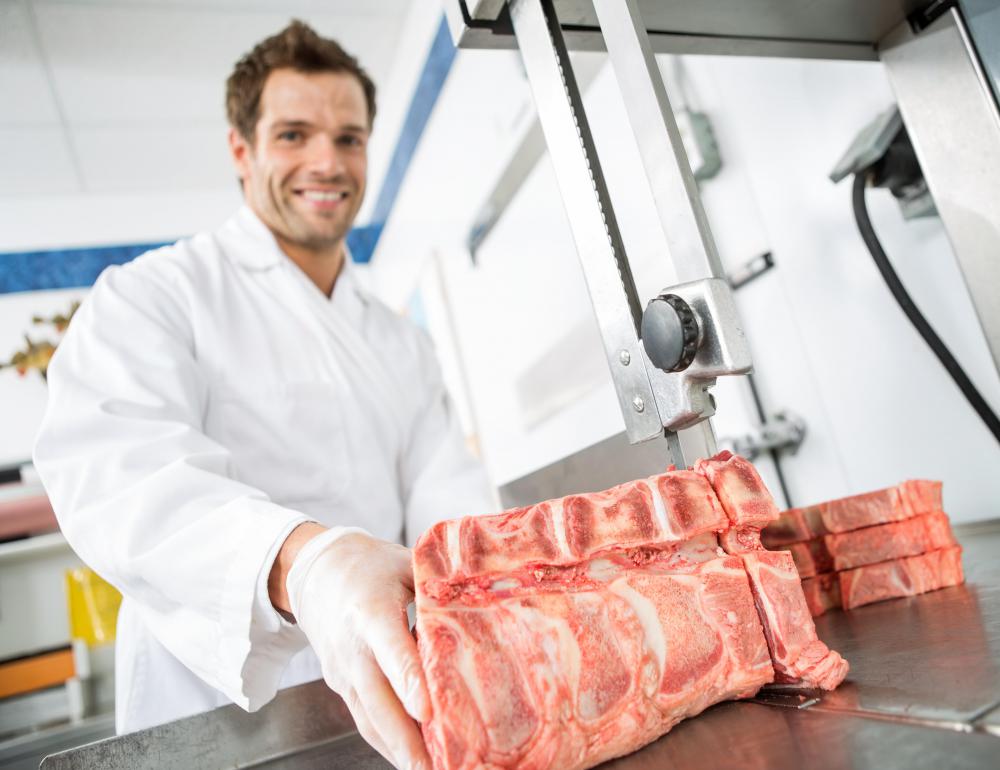At WiseGEEK, we're committed to delivering accurate, trustworthy information. Our expert-authored content is rigorously fact-checked and sourced from credible authorities. Discover how we uphold the highest standards in providing you with reliable knowledge.
What Is a Butcher Block Countertop?
A butcher block countertop is a type of surface commonly present in butchering settings as well as in home kitchen settings. This type of countertop is intended for use as a cutting block, traditionally for meats but in home kitchen use, for any type of cutting of foods. The butcher block countertop is made from various types of woods, the most common of which are oak and maple. The orientation of the pieces of wood used to create the countertop give it strength as well as a distinct appearance.
Two general types of butcher block countertop designs exist: end grain and edge grain. End grain refers to the orientation of the various pieces of wood that are glued or otherwise adhered together; the ends of the pieces of wood will face upward, exposing the end grain as the cutting surface. Edge grain butcher block countertop models will feature pieces of wood oriented so the edge of the wood, or side, will face upward to provide the cutting surface. Both of these orientations promotes strength and durability, though the appearance of each type of countertop will change accordingly. Edge grain countertops tend to feature a long, striped appearance, while edge grain countertops will feature a checkerboard appearance.

The history of the butcher block countertop dates back to the 19th century. Prior to this time, butchers would cut meat on tree rounds because the wood was a naturally clean and antibacterial cutting surface. Tree rounds tended to crack, however, so the butcher block countertop was developed to prevent cracking. While oak was used as a surface, it was not as common as certain types of maple. The maple was strong enough to resist damage from the cutting tools, but not so hard that the tools would be blunted quickly from cutting on the maple surface. The block needed to be very thick to ensure it could be used for many years and planed down when it became pitted or gouged.
In modern kitchens, sometimes the butcher block kitchen top is used for cutting, but very often it is used simply as a decorative or attractive countertop service used in meal preparations. Many chefs prefer to use a butcher block countertop because larger cuts of meat can be placed on this stable and strong surface for preparation and cutting; the surface is antibacterial, which is a great choice for food preparation, though the countertop will require some maintenance and care to prevent excess damage.
AS FEATURED ON:
AS FEATURED ON:











Discuss this Article
Post your comments